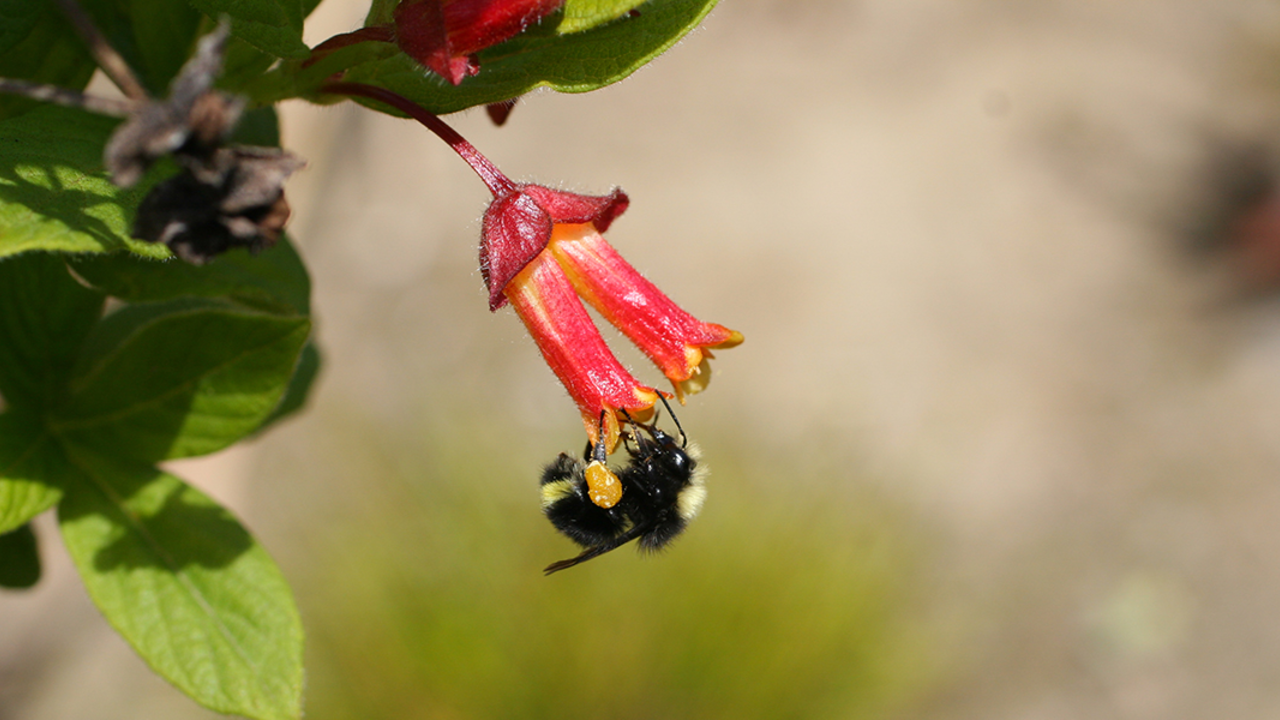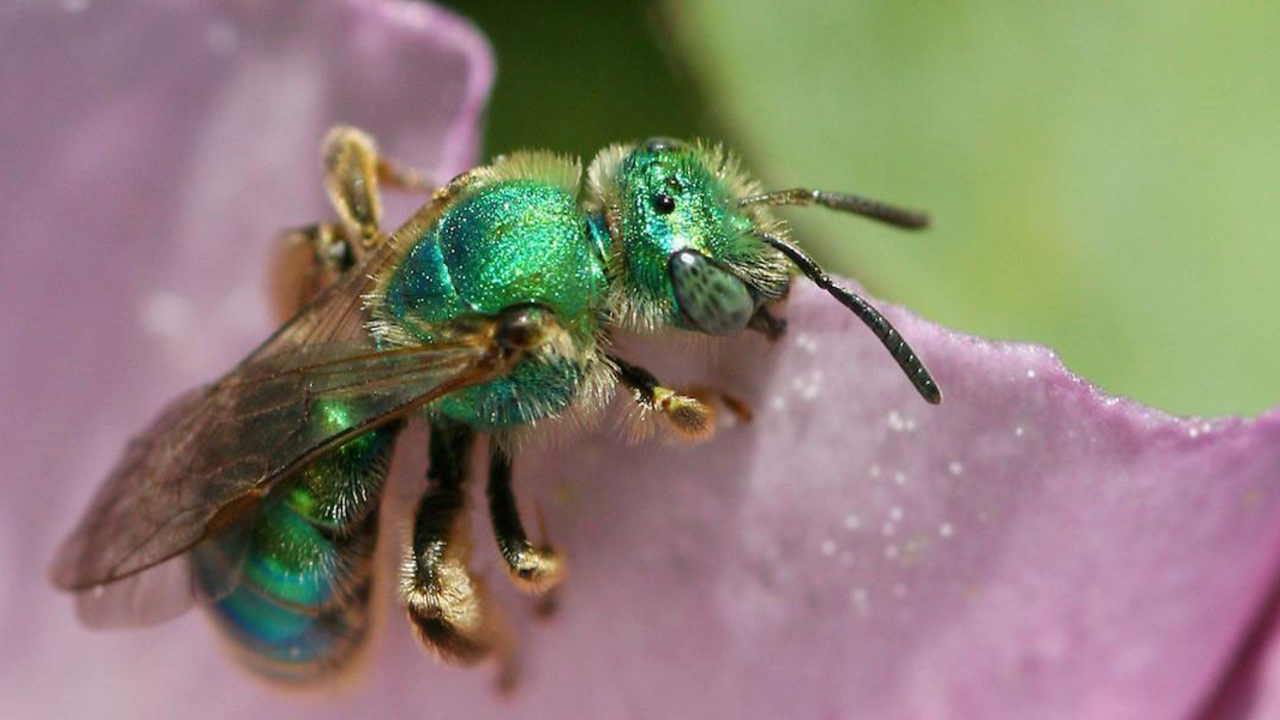Why Bees Are All the Buzz—In the Presidio, Across the Country

Will Elder/National Park Service
Bees have found a new home—in the headlines of major news networks. And for good reason.
“If we didn’t have them, we wouldn’t have plants,” says Desmond Murray, Presidio Nursery Community Coordinator, with a frank tone in his voice. “If we didn’t have plants, we wouldn’t have things like trees, so we really depend on them [pollinators] to help provide the building materials and the clothes that we use and wear every day.”
The decline of bee populations has been well-documented around the world, setting ecologists and environmentalists abuzz with worry. In February 2017, the U.S. Fish and Wildlife Service added the rusty patched bumblebee—native to Eastern and Midwestern United States—to the Endangered Species List. This was the first such designation for a bumblebee—or for any bee species—in the continental U.S.
And cards continue to stack against the overall U.S. bee population. According to the Bee Informed Partnership, Apiary Inspectors of America, and the U.S. Department of Agriculture, the U.S. honeybee population plummeted by 44 percent in winter 2016. The culprits constitute a horror show of calamities: Parasitic mites, starvation, pesticides, and more.
In a March 2017 interview with the San Jose Mercury News, Gordon Frankie, a research entomologist at the UC-Berkeley Urban Bee Lab, noted that native bee species in California also have felt the sting over the years (the recent historic drought only exacerbated the issue).

We’re not just talking about that medium-sized, fuzzy black-and-yellow European honey bee with the trigger-happy, barbed stinger that most people connote with the word “bee.” In fact, bee species are as diverse and vibrant as the flowers they visit.
“In San Francisco, there are about 200 different [bee] species,” Murray mentions.
According to Murray, there are 350 different species in the Bay Area and about 1,500 different species in California.
“In the United States, there’s around 4,000,” he continues. “In the world, there’s around 30,000 species of bees.”
Honeybees, in particular, have been moving into the Presidio, according to David Harelson, Wildlife Biotech with the Presidio Trust. Feral honeybee colonies in San Francisco were low in numbers until 2006-2007—when the do-it-yourself honey trend and urban beekeeping surged in popularity.
“When those manufactured hives swarm, the bee count gets so high that for a physiological reason they swarm, rear a new queen, and 30% of the colony will take off and find a new receptacle to colonize,” Harelson observes. “Often times that’s in the Presidio.”
Why the Presidio? The same reason we all are attracted to the 1,400-acre park—that dose of a semi-wild landscape ripe with greenery. Bees, like us nature lovers, appreciate the refinements of an untamed terrain.
But do these newcomer honeybees negatively affect native bee populations? Harelson says not so much.
“The leading Bay Area entomologists and bee experts suggest the introduction of several honeybee colonies is negligible and does not impose significant competition for fodder-resources or nesting areas with native bee species,” Harelson writes in an email. “It is the destruction of wildlands and native plant habitat that has the most deleterious effects on native bee species.”
That’s where we come in. According to both Murray and Harelson, planting native plants can be a boon for native bee populations.
“Evolutionarily speaking, these organisms [native bees and native plants] evolved together,” Harelson explains. “[Certain] bees have longer proboscis [straw-like tongue] that can go down in the flower and that other bees couldn’t utilize for anatomical reasons.”
To attract more pollinators in an environmentally friendly way, try maintaining a wild element in your garden—even if it means just leaving a bare patch of dirt.
“If you want native bees to come to your garden, it’s really important to leave bare ground,” Murray explains. “When you mulch, a lot of times you bring water and heat into where the plants are growing, but a lot of times that can deter or keep native bees away who will oftentimes dig and live underground.”
Also, creating a patchwork of diverse and brightly colored native plants also attracts bees like, well, honey.
“Some things that bees are attracted to are the different colors of flowers,” Murray notes. “They tend to be drawn towards things like purples, yellows, violets, blues, and whites.”
When coming up with a pollinator plan for your garden, Harelson advises paying attention to hydro-zoning, the practice of clustering together plants with similar water needs, and historical plant records for your neighborhood. See what’s historically grown in your neck of the woods before introducing new floral species.
And don’t be surprised if you attract a whole host of non-bee pollinators as well.
“Ants and beetles can be pollinators,” Murray clarifies. “Moths can pollinate at nighttime. One of the plants here [in the Presidio] is soap root, and the flowers only open at night, so that’s when the moths can pollinate.”
Regardless of the species, there’s a consensus that more needs to be done in our own backyards to invite and encourage bees and their pollinating peers, especially through native plant gardening.
After all, to make a difference, it takes a hive.
Save
